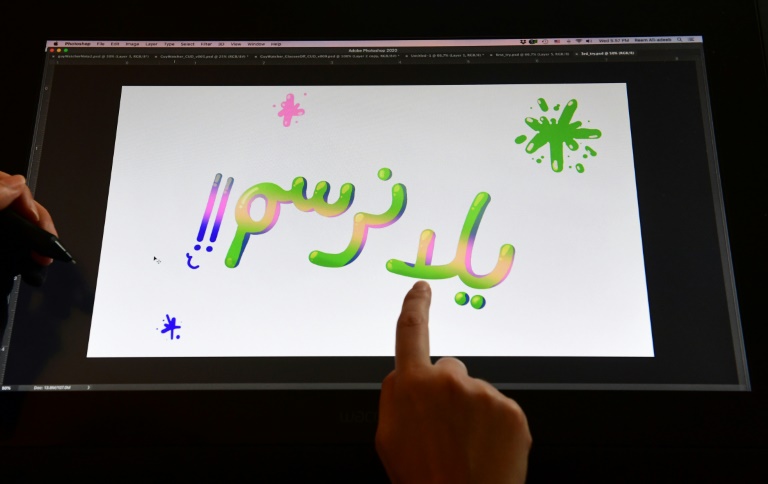The old philology of the Arabic language was preoccupied with answering a metaphysical question on whether language is acquired through practice or is a revelation by God. Most views tended to see it as a revelation, since Arabic is the language of "the People of Paradise."
In contrast, I premise my research on the achievements of the 19th and 20th centuries in the field of linguistics, a field that holds that all languages past and present emanate from one source: the Cro-Magnon Man, who originated some 100,000 years ago, and spoke one language that spread as he moved. However, the inevitable isolation of the resulting scattered societies led to the diversification of language.
So we can see that this metaphysical question, which continues to linger to date, has an answer. That answer is related to the development of language and to the idea that all languages have one origin.
Language is the tool of communication, thought and creativity. It is an innovative simulation of life. If we look up a word in the dictionary, we will find that it is a direct reflection of life. A dictionary, in its incorporation of names of things, ideas, actions and events, reflects the different experiences of human life. And even though different languages have different words, yet it remains a fact that all languages describe the same objects of human experience. The words, sounds and meanings in the different languages were derived from older languages, but their meanings and construction were continuously renewed.
The same applies to syntax. Since human life is basically the same everywhere and at all times, syntax, which handles the elements of life’s events in sentences, is basically the same across languages.
But the unity of syntax across languages should not be attributed to the presence of one common origin of language, although this is a fact, but rather to the similarity of human life. For if human experience generally involves elements such as the action (verb), doer (subject), predicate, adverbial of place or time and goal, a sentence would necessarily have to express these same elements.
The huge variety of words from one language to another gives the impression that syntax is different between languages. However, thinking of syntax as the logical construction of a sentence shows that it is the same across languages. In fact, it is not by coincidence that all syntaxes in the world talk about the simple construction of sentences as consisting of a verb, subject, object, zarf (adverb), subject and object complements, and other grammatical forms.
My critical studies in the field of syntax emphasize a distinction between logical, objective syntax, which is at the heart of languages, and traditional syntax rules set by humans, with that latter being the focus of my criticism. My attempt to develop syntax does not tackle linguistic and objective syntactical facts, but rather some of the basic concepts in traditional syntax. I would also like to emphasize that mistakes in traditional Arabic syntax are generally similar to mistakes in traditional syntax in all languages.
To date, grammarians continue to mix between irab (desinential inflection) and syntax. They are misled by the decades-long confusion created by the Academy of the Arabic Language in Cairo and by other language academies in the Arab world. However, irab is just a syntactical tool to differentiate between subjects and objects. When it is dropped, an alternative – the word order – is used, and this involves the arrangement of the elements of the sentence to differentiate subject from object.
Hence, my work is not concerned with spontaneous, objective irab facts. My attempt is concerned with disentangling irab from syntax, examining the nature and applications of irab and emphasizing the necessity of eliciting the syntactical facts related to the construction of sentences. I also try to explain several irab misconceptions in Arabic syntax.
I have no objection against Arabic irab. I do not call for dropping it altogether for the sake of modern, wrongly termed colloquial, Arabic. I believe such decisions are not made by grammarians, old or new, but rather by users of the language who have decided to keep a dangerous diglossia for long centuries.
But even though my concern is not irab, I think that clarifying the concepts related to the construction of sentences helps with understanding irab. Irab is easy when a nominative or accusative case is used. The chief difficulty in irab is to master its detailed inflection system. Therefore, one of the most important ways to facilitate irab is through ridding Arabic grammar of the concepts of irab mahalli (desinential inflection according to syntactical function of invariable nouns or groups of words like phrases or sentences) and irab taqdiri (desinential inflection of words whose inflection is unpronounced), in addition to canceling the nonsensical irab of khabar/musnad.
The khabar
The most important part of my attempt to reform Arabic syntax is reforming the concept of khabar (predicate) or musnad. My attempt in this regard is based on reviving an old syntactical theory that explains khabar or musnad as everything we attribute to or negate from the musnad ilayhi (subject), i.e. the whole sentence with the exception of the musnad ilayhi. As such, khabar consists of multiple elements, while irab is only concerned with individual words. Thus invariable words and any group of words are excluded from irab. Therefore, the khabar or musnad no longer take any irab inflections.
It is important to note here that the verb kana (to be) is responsible for the problem that concerns giving the one-word khabar a nominative case, because it is mostly dropped in affirmative imperfect tense sentences, creating the illusion of having a sentence without a verb.
The problem with khabar exists in other languages. However, while European syntax has found a way to resolve this problem, traditional concepts still reign in Arabic syntax.
Since the correct understanding of khabar/musnad is to have it include all elements of the sentence except the musnad ilayhi, it opens the door to effective grammatical applications. That way, we will have a comprehensive map of all possible forms of the Arabic sentence. And as is the case with other languages, we could incorporate these verb patterns, and hence sentence patterns, into our dictionaries, enabling dictionary users to build similar sentences. In addition, a correct understanding of khabar will eliminate its irab, and thus also the bigger part of the so-called irab mahalli, which has complicated both syntax and irab.
It is also necessary to correct the concept of musnad ilayhi. Musnad ilayhi is the syntactical subject, rather than the linguistic subject, and therefore it encompasses everything to which the action is attributed and includes the mubtada (subject in a "nominal" sentence), subject and nai'b fa'il (the subject of a passive verb), the so called sisters of kana, and verbs of imminent actions, etc.
Indeed, there are differences between those diverse forms of the musnad ilayhi/subject. However, the correct concept of musnad ilayhi applies to them all. It is also important to note here that a verb, in the syntactical sense, includes the dynamic transitive and intransitive actions as well as stative verbs. Therefore, the same applies to the doer of the action (the musnad ilayhi), and so the syntactical subject encompasses the subject of an intransitive verb and nai’b fa’il, even though in the case of nai’b fa’il we do not have a linguistic subject, but rather an object, in meaning.
One sentence
The concept of sentence, which divides sentences into nominal and verbal without syntactical justification, is also confused. Grammarians, rather than the logic of language or objective syntactical logic, have introduced two rules according to which a verb precedes the subject and succeeds the mubtada.
The distinction between nominal and verbal sentences can be attributed to those wrong rules. By allowing the verb to come anywhere in a sentence, as the logic of the language itself allows, all nouns that take the nominative case, with the exception of musnad/khabar, become musnad ilayhi or subjects.
By excluding these two wrong rules and correcting the concept of khabar/musnad and musnad ilayhi, we would have one type of Arabic sentence composed of musnad and musnad ilayhi, as there is no sentence without a verb, except in the case of the verb kana in the affirmative present tense, where linguistic economy leads to the elimination of the verb which expresses a state of "general being" in this case.
There is also a need to correct the concept of zarf (adverb). Arabic syntax only recognizes adverbs of place and time, even though the musnad/khabar encompasses things other than the verb and object and the adverbs of place and time. A sentence answers several questions on the purpose of carrying out a certain action and how it was carried out as well as other aspects. We have several adverbs as is the case of other syntaxes. Nouns that take the accusative case — with the exception of the object — are actually adverbs that explain the dimensions of the action described in the sentence.
Linguistic liberation
The goal behind correcting and renewing syntax is liberating it from exaggerated focus on irab and adopting logical syntactical analysis of sentences. This will lead to the development of the science of sentence construction, which is a general syntactical mission that should be carried out by those concerned with the science of syntax.
This syntactical development will open the door to a successful mechanical processing of information in Arabic, a processing which is hampered by the confusion permeating syntax. Any language is subject to deterioration in this era in the absence of mechanical processing of information in that language.
I have to note here that my attempt to reform Arabic syntax is a revival of the attempt by the Academy of the Arabic Language and the Egyptian Education Ministry, some 65 years ago. That attempt, however, was aborted by linguistic-religious fundamentalism, which opposes the development of Arabic syntax as much as it opposes any form of free scientific research.
However, the weaknesses of the attempts to reform Arabic syntax have enabled fundamentalism to defeat that project. Most of those who tried to renew Arabic syntax in modern times have focused on irab and its simplification. But this is not the right way to do things. We should first start by correcting syntactical concepts, and this will eventually facilitate irab.
Genuine simplification of irab has nothing to do with those miserable attempts aiming at doing without what is considered to be the difficulties of irab. It rather involves linking the grammatical functions of irab to the elements of the sentence, understanding its realities and getting rid of its illusions, like the irab mahalli and irab taqdiri, as well as tabulating irab inflectional signs to facilitate their use.
One of my goals is to have Arabic syntax join the current revolution in the European syntax. This should not be seen as submission to Western criteria or as a Western cultural invasion, particularly since the premises of my attempt can already be found (but as a marginal concept) in old Arabic syntax.
In all cases, the development of Arabic syntax should not be undertaken in isolation from comparative syntax and the achievements of the linguistic sciences in other languages, just like old Arabic syntax had close links with old European and other sciences.
Instead of half-hearted attempts in the face of the sweeping power of linguistic-religious fundamentalism, which may be more potent today than ever, we should engage in attempts to develop all forms of science, including linguistic ones, as part of an effort to change the entire society and life in the long run on the road to a free society.
Khalil Kalfat is a leading Egyptian leftist writer and translator. This is a translation of his article written in Arabic, introducing his book, "For a New Arabic Syntax." The article was translated by Dina Zafer.
This piece was originally published in Egypt Independent's weekly print edition.




